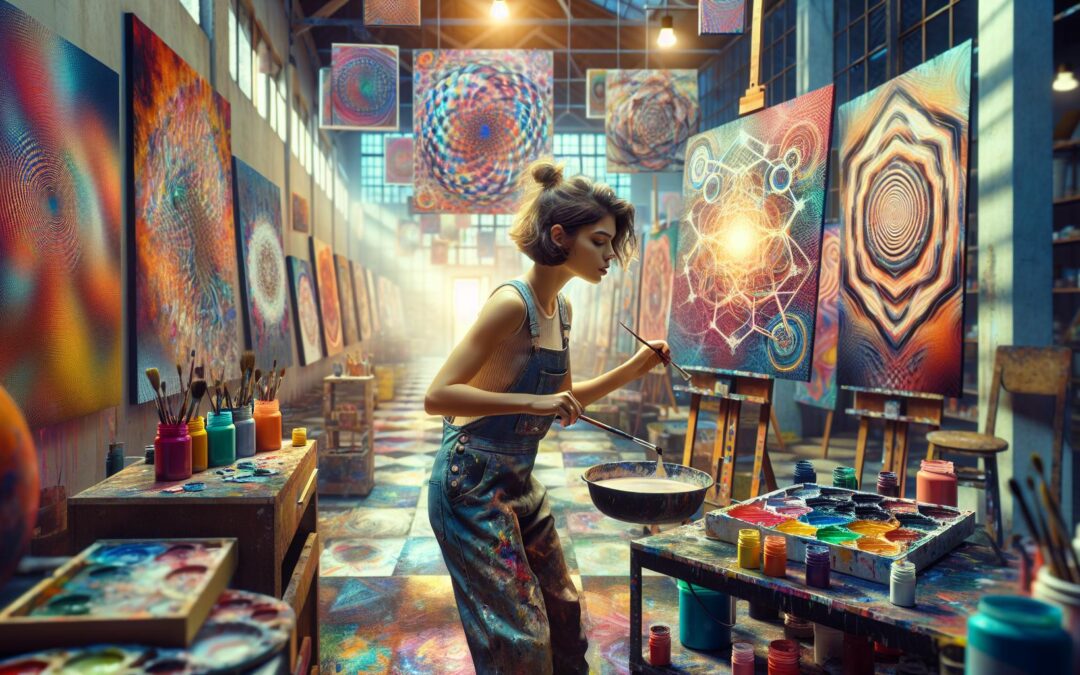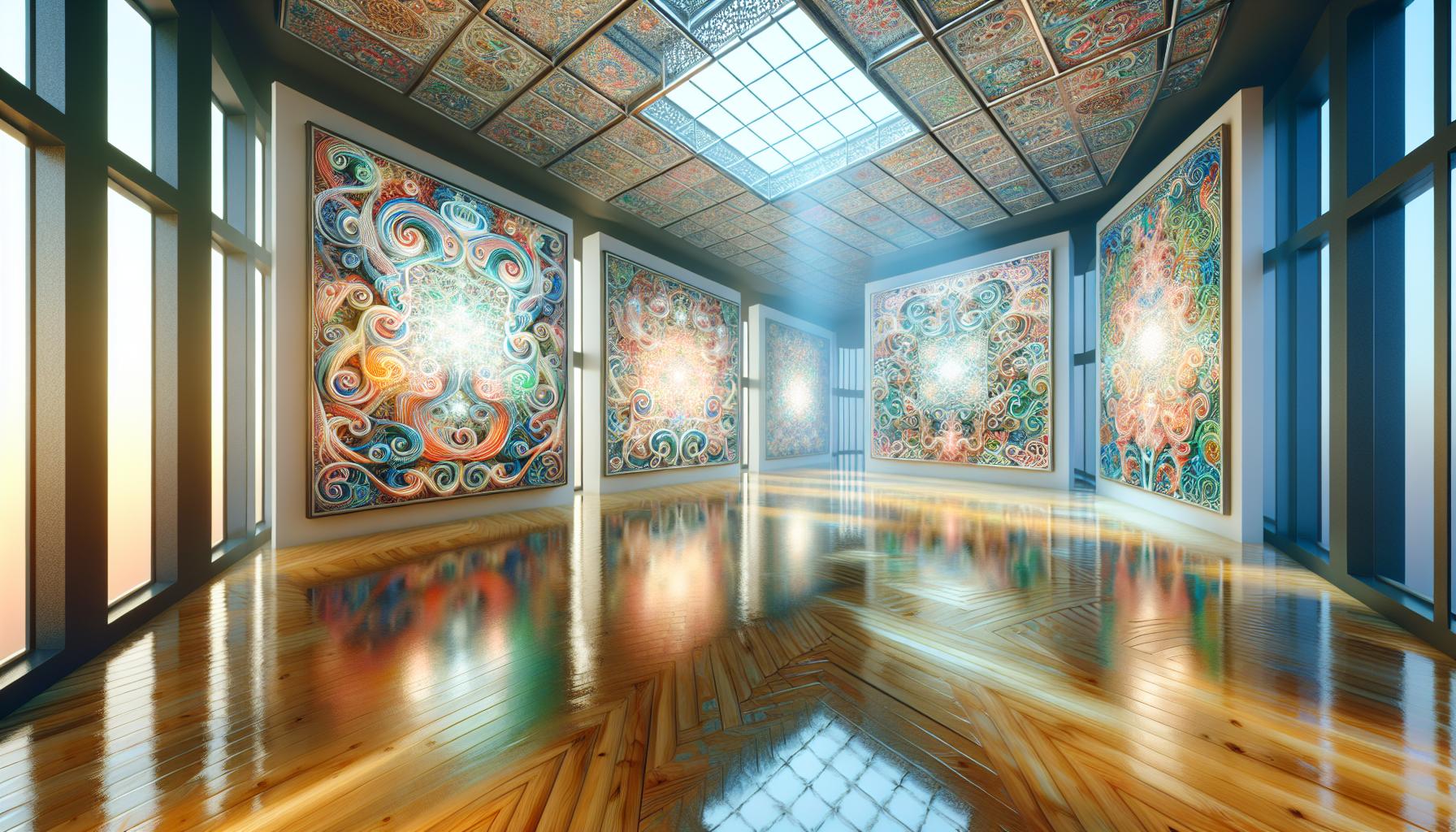Repetition is a powerful tool in the world of art, serving as a fundamental element that shapes perception and meaning. Artists across various mediums harness this technique to evoke emotions, create rhythm, and enhance the overall aesthetic experience. By repeating shapes, colors, or themes, they invite viewers to engage more deeply with their work, fostering a connection that transcends the surface. This article delves into the key function of repetition in art, exploring how it influences interpretation and adds layers of depth to creative expressions. From ancient patterns to modern installations, repetition not only captivates the eye but also communicates complex ideas. Understanding its role can unlock new appreciation for both classic and contemporary pieces, revealing the intricate dance between familiarity and innovation in artistic expression.
The Key Function of Repetition in Art Is To
Repetition establishes rhythm, a fundamental element in art that enhances viewer experience. It draws attention, guides perception, and emphasizes emotional and conceptual connections.
Understanding Rhythm in Artistic Expression
Rhythm in art pertains to the visual tempo that emerges from repeated elements. It creates movement and flow, leading the viewer’s eye throughout the artwork. Artists often employ rhythm to build a sense of harmony or tension, depending on the pace and frequency of the repeated elements. By maintaining consistency in shapes, colors, or patterns, they craft a cohesive visual narrative that resonates with audiences.
- Visual Arts: In paintings, artists like Claude Monet use repeated brush strokes to evoke light and atmosphere, establishing a rhythmic quality that engages viewers.
- Sculpture: In sculptures, Henry Moore incorporates repetitive forms that create balance and movement, enhancing the viewer’s interaction with the piece.
- Architecture: In architecture, the repetition of columns or window patterns establishes rhythm, influencing the perception of scale and order in structures like the Parthenon.
- Music: In music, repeating motifs or harmonies create rhythm and expectation, guiding listeners through emotional landscapes, much like visual patterns do in artwork.
- Literature: In literature, refrains and recurring themes foster rhythm, impacting the pacing and emotional resonance of a narrative, similar to how visual repetition works in art.
The Key Function of Repetition in Art Is To Reinforce Themes
Repetition in art powerfully strengthens themes, helping audiences recognize and connect with underlying messages. Artists utilize repeated elements to crystallize ideas, drawing viewers’ focus to significant concepts or emotions.
Identifying Themes Through Repetition
Repetition aids in identifying core themes by emphasizing certain elements within an artwork. Artists highlight specific shapes, colors, or motifs, anchoring them in the viewer’s memory. This technique allows for clearer communication of ideas, making the thematic intent unmistakable. For instance, a repeated color palette can evoke particular moods, while recurring symbols can signify deeper meanings, creating a cohesive narrative for the audience to explore.
Case Studies in Thematic Repetition
Several case studies exemplify the thematic power of repetition in art:
- Yayoi Kusama’s Infinity Mirror Rooms: Kusama employs repetitive dot patterns to explore themes of infinity and self-obliteration, allowing viewers to experience their relationship with the vastness of existence.
- Andy Warhol’s Campbell’s Soup Cans: Warhol’s repetitive imagery of everyday objects underscores consumer culture and the commodification of art, challenging perceptions of originality and uniqueness.
- Sweets by Kiki Smith: Smith’s repetitive motifs of animals within her sculptures convey themes of nature and the fragility of life, inviting reflections on humanity’s connection to the natural world.
- Frida Kahlo’s Self-Portraits: Kahlo’s repeated use of self-portraiture explores personal identity and emotional pain, allowing viewers to engage deeply with her experiences and cultural identity.
These examples illustrate how repetition not only reinforces thematic expressions but also enhances viewer engagement, transforming the interpretation of art into a more profound experience.
The Key Function of Repetition in Art Is To Enhance Memory
Repetition in art significantly enhances memory, allowing viewers to recall details and concepts more effectively. Repeated motifs or themes facilitate recognition and can anchor an emotional or cognitive response.
Memory Recall and Visual Art
Repetition strengthens memory recall by embedding patterns in the viewer’s mind. Artists intentionally repeat shapes, colors, and forms to create familiarity, leading to greater retention of visual information. For instance, in the works of Gustav Klimt, the recurring use of golden patterns not only captures attention but also makes the artwork memorable. Similarly, the repetitive brushwork in Vincent van Gogh’s paintings reinforces emotional impact, aiding viewers in recalling the essence of the piece long after viewing. This memorability fosters a deeper connection between the audience and the artwork.
The Role of Repetition in Conceptual Art
Repetition plays a critical role in conceptual art by reinforcing ideas and enhancing memory of concepts. Through repeated themes or symbols, artists convey complex messages that resonate with audiences on multiple levels. For example, in Sol LeWitt’s wall drawings, the repetition of geometric shapes becomes a vehicle for exploring the concept of art itself. This technique prompts viewers to engage intellectually, as they recall and analyze the significance of repeated elements. In minimalist art, repetition simplifies forms, creating a visual language that is easy to remember and interpret, thus transforming viewer perception into a more profound understanding of the artistic intent.
The Key Function of Repetition in Art Is To Evoke Emotion
Repetition in art serves to evoke powerful emotional responses, tapping into viewers’ subconscious connections. Artists leverage this technique to create resonance, enhancing the overall impact of their work.
Emotional Responses Triggered by Repetitive Patterns
Repetitive patterns elicit various emotional responses, shaping viewer experiences and interpretations. Artists use repetition to create familiarity, leading to comfort or nostalgia, while also prompting anxiety or tension through dissonance. For instance, rhythmic motifs can induce calm, as seen in rhythmic patterns found in textiles or wallpaper designs. Conversely, irregular repetitive forms can generate unease, drawing attention to discordant themes present in political or social commentary art.
Repetition amplifies emotional intensity by reinforcing themes or ideas within a piece. This method strengthens connections between the artwork and the audience’s memories or feelings, thereby enriching the viewing experience. For example, the consistent use of the color red in Mark Rothko’s works evokes passion and urgency, fostering deep emotional engagement.
Artists Who Utilize Emotional Repetition
Numerous artists have effectively utilized repetition to evoke emotion in their works.
- Yayoi Kusama: Known for her immersive Infinity Mirror Rooms, Kusama employs repetitive dot patterns to create an overwhelming sense of infinity, eliciting feelings of wonder and introspection. Her art invites viewers to lose themselves in a dialogue between self and the universe.
- Andy Warhol: Warhol’s iconic Campbell’s Soup Cans exemplify emotional repetition, using repetitive imagery to critique consumer culture. The series invokes both nostalgia and a sense of detachment, reflecting society’s obsession with mass production.
- Sophie Calle: Calle’s work often involves repetitive actions or narratives, such as in her piece “The Address Book,” where she repeatedly explores themes of identity and intimacy. This repetition intensifies emotional complexity and engages viewers on multiple levels.
- Anni Albers: In textile art, Albers used repetitive geometric patterns to evoke emotional responses related to rhythm and balance. Her works combine tactile qualities with visual allure, inviting viewers to connect emotionally with the fabric.
Artists across various mediums effectively harness repetition, enhancing emotional impact and forging deeper connections with audiences. Through strategic use of repeated elements, they transform art into an emotionally charged experience. Repetition in art serves as a vital mechanism that deepens engagement and enhances understanding. By utilizing this technique, artists create connections that resonate emotionally and intellectually with viewers. The interplay of rhythm and thematic reinforcement allows for a more immersive experience, inviting audiences to explore layers of meaning within each piece. Through the strategic use of repeated elements, art transforms into a dialogue between creator and observer, enabling a richer appreciation of both the familiar and the innovative. As viewers recognize and recall these patterns, they forge a lasting bond with the artwork, ensuring that the impact of repetition continues to echo long after the initial encounter.


